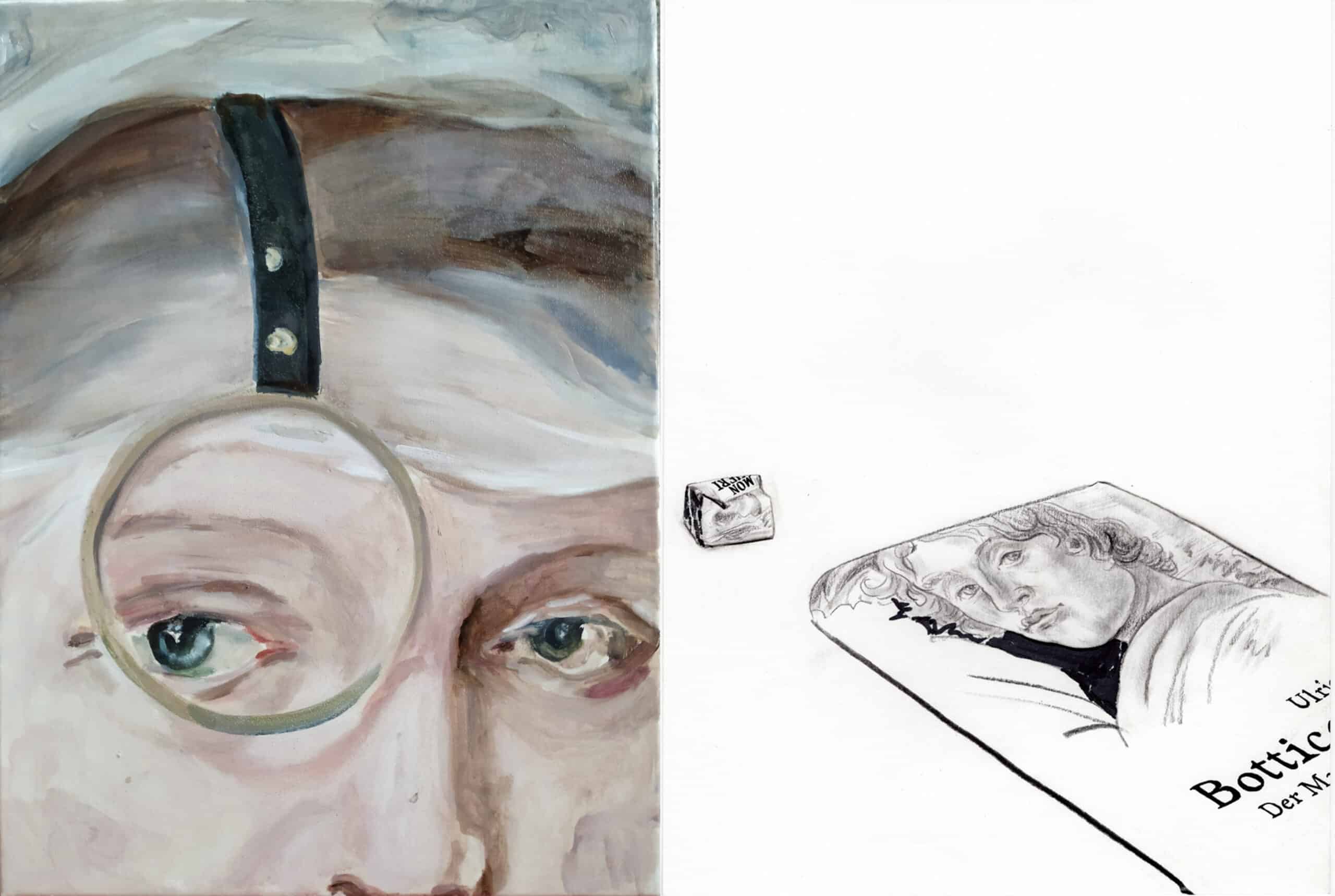Good Copy – Bad Copy
after the butcher is delighted to present the forthcoming exhibition representing two artistic perspectives whose work not only addresses fundamental social questions but also explores copying through drawing and painting as an artistic method.
Lydia Hamann & Kaj Osteroth have worked together as an artist duo since 2007. They are currently working on their project Glamshots. Malerinnen in der Berliner Gemäldegalerie (Glamshots. Women painters in the Gemäldegalerie, Berlin), with the relationship between the art works of female and male artists from the permanent collection of the Gemäldegalerie, Berlin. It is striking that out of 1000 paintings on display, only 6 are by women artists: Anna Therbusch, Marie Vigee-Lebrun, Angelika Kauffmann, Marie Latour, Anne Vallayer-Coster, Sofonisba Anguissola. The picture is no less problematic in the entire gallery holdings, where only 20 of the 3500 pictures are by women artists. Lydia Hamann & Kaj Osteroth decipher the pictures by these women artists through a collaborative analysis of moments, gestures and viewpoints. The results are a sampling of details from 20 different pictures from the collection on display and in storage. Hamann & Osteroth are big fans of repetition and imitation, copying the paintings of other women artists. They imitate, recreate, interpret, fail, are confronted with their own possibilities and methods, understand, admire and surrender to the ecstasy of colour. In this way they move within a fascinating dialogue, in front of and with the originals. In conversion to canvas, they trust in their usual methods of incapacity, a cheerful copying, accompanied by inability and reluctance and the question of what makes a good copy or a bad copy. The Chinese artist Xiaopeng Zhou has taught drawing to an elderly lady in Berlin for some time. In the beginning he taught her to draw flowers, trees, cacti and other plants in the Botanical Garden and in turn, drew her while she drew the plants. In doing so, he used reportage drawing as an important method of his artistic research. During the lockdowns, Zhou and the elderly lady met in her apartment to continue drawing and he learnt more about her interest in philosophy, literature, art history and feminism. The learning process became reciprocal and more intensive as Zhou improved his German language skills as well. At after the butcher, Zhou presents a video work documenting this joint learning and working process. He also shows some of the drawings that were made in this context, drawings from the Botanical Garden and her apartment in which conversations happened about emotional and physical work, illness, therapy and healing and their own different experiences of age, gender and culture.



Schreibe einen Kommentar